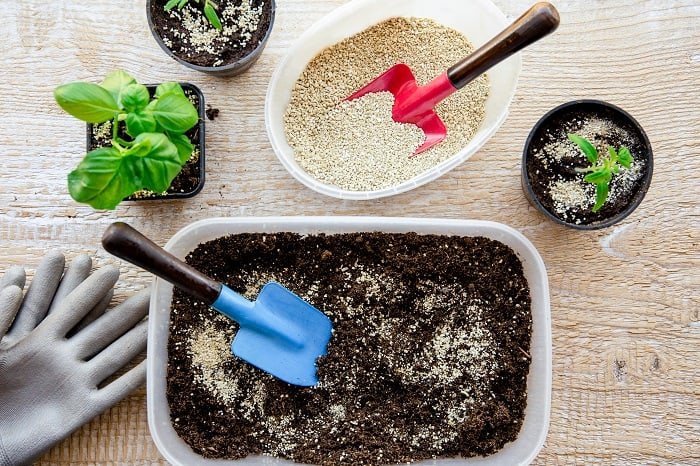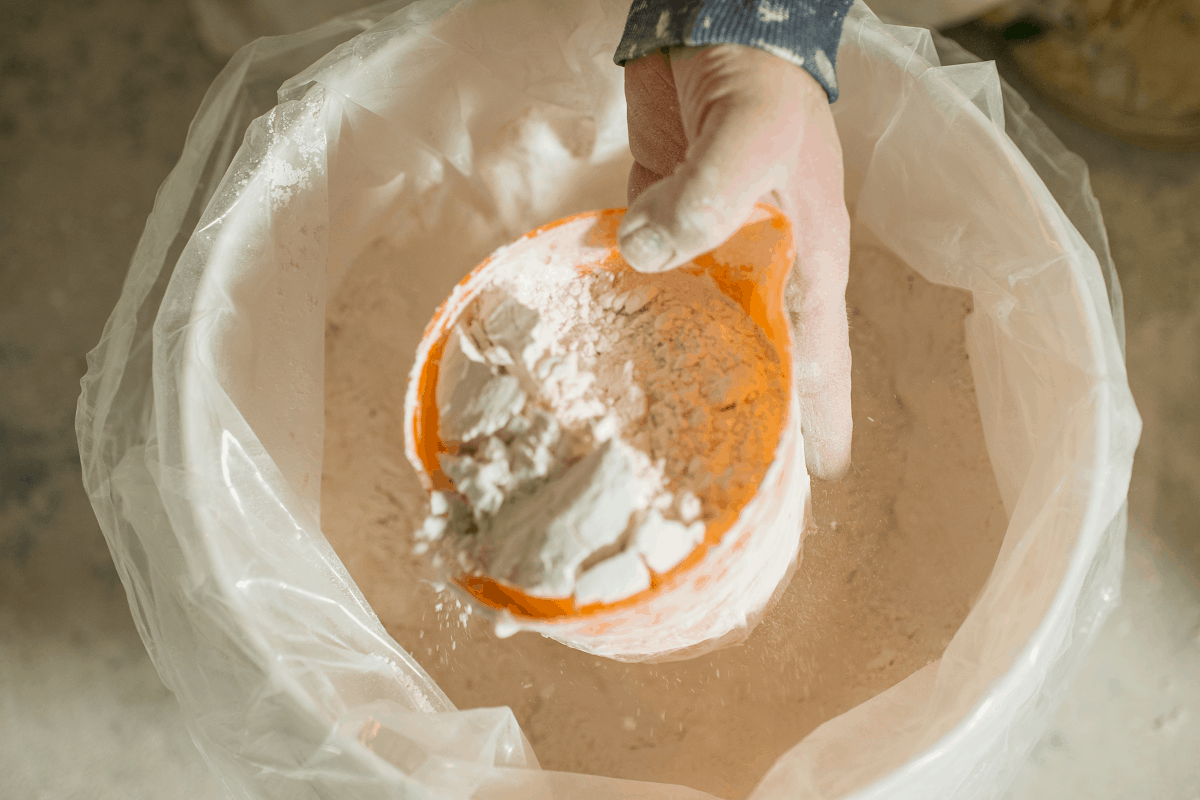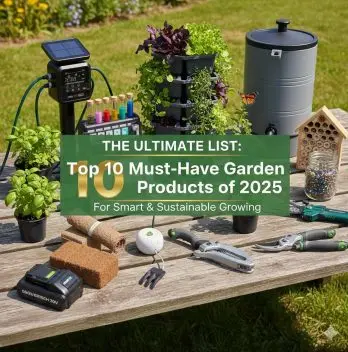If you’ve been planning to use gypsum for
What is Gypsum?
Gypsum is the naturally occurring mineral referred to as calcium sulfate dihydrate. It is used mainly as a fertilizer and also in the making of drywall, plaster, and blackboard. There are varieties of the mineral that is also used in making sculptural works of art. It appears colorless but can also be defined as yellow, pink, tan, gray, brown, blue, or red, due to the presence of impurities.

In the garden, gypsum can serve a lot of purposes. It can be used as a
Uses of Gypsum in the Garden
We use gypsum mainly in our garden to plant vegetables in the heavy clay subsoil we have at our backyard. It made it easy for us to till the
It has also helped to improve the outcome of our crops resulting in better yield and more profit. Which is what you will be interested in if you are a commercial farmer says Bob who wrote us from Nevada.
Gypsum can be the solution to your clay
You can also use gypsum to recover damaged
Gypsum is a readily available and cheap option for
Nutrients Contained in Gypsum
Before you make use of gypsum for
Calcium is useful to plants as it helps in the transportation of nutrients within the plant and in building thick cell walls. Deficiency in calcium will result in yellowing of leaves and reduced plant growth.
Sulfur is useful in the production of oil and protein in both plants and seeds. It also helps in the healthy development of the plant until maturity. Deficiency in sulfur also results in the coloration of leaves.
Using Gypsum for Soil Amendment
Before you use gypsum in your garden, you must carry out a
You will need to perform the test so as you can determine the sulfur and calcium content. If the result shows that they are in abundance, it will be pointless to include more in the form of gypsum.
You also need to be aware that you shouldn’t add gypsum to
Since
The effect of gypsum on the
Other Alternatives to Gypsum
There are other alternative methods you can use in your garden if you are not comfortable with gypsum. But it doesn’t matter which method you choose, you should be on the lookout for options that can help in improving drainage, increase moisture retention and aeration, reduce crusting of the
You can make use of any of the following alternatives instead of gypsum
- Compost
- Lawn clippings
- Autumn leaves
- Manure
- Organic mulch
- Cover crops

FAQ’s
Can you add too much gypsum to soil?
Yes, you can.
Gypsum is also commonly added to soil to improve the ability of the soil to hold water.
There is a point where adding too much gypsum will actually hurt your plants. If you add too much gypsum, it will pull water from the roots and lead to the root rot that everyone has been trying to avoid for years.
Here are some things you can do to prevent this problem:
If you have a high-water table, make sure you don’t have any puddles around the plants. You can also use a moisture meter to check the soil. Make sure you are watering your plants during the day when they need it the most. You can test the soil moisture by using a water bucket.
What does gypsum do for soil?
Gypsum is a mineral that occurs naturally in the earth’s crust. It occurs as white to yellowish-white clay minerals and as crystalline rock.
Gypsum is a very common component of soils. It is also used in many agricultural products such as fertilizer, lime and cement. It has many uses in agriculture. It is used as a soil conditioner and as a slow release fertilizer.
Can you apply gypsum and fertilizer together?
You can apply gypsum and fertilizer at the same time, but it’s best to wait a few days or a week before you apply them. Fertilizer contains nitrogen (N) and phosphorus (P), which are the two main nutrients for plants to use. Nitrogen helps increase the size of your plants and make them grow faster.
The problem is that if you use a liquid fertilizer, it will soak into the ground before the gypsum hardens so the gypsum doesn’t really stick to anything. The best way is to mix the liquid fertilizer with a good amount of sand and then apply it in a thick layer over your grass.
It depends on what you are using for your fertilizer. If you are using a water soluble fertilizer, then you can apply them together. If you are using a fertilizer with a slow release agent (such as nitrogen) you can apply them at the same time, but you will need to apply the fertilizer at a later date to avoid running out of nitrogen before the grass has time to use it.
When should you apply gypsum to soil?
The only time you should apply gypsum to soil is when it is already dry. This includes all soil that has not been wet for a period of at least 72 hours. Gypsum can be applied in either liquid or dry form, and will work best when applied in a powder form.
Conclusion
Gypsum doesn’t contain any plant nutrient but composes mainly of calcium and sulfur. It isn’t a good choice of fertilizer for your
For amending nutrient deficiency in the
Which method do you use in improving the fertility of your

Josephine is an enthusiastic gardener who loves to spend her spare time tending to her garden. She is passionate about growing her own food, and aspires to one day have her own vegetable garden. Josephine is also an animal lover and often takes in stray cats and dogs. She enjoys spending time with her pets in the garden, and is often seen playing with them or watering her plants. Josephine is an avid reader and enjoys learning about new gardening techniques and plants. She is always looking for ways to improve her garden and make it more beautiful. She is a great friend, always willing to lend a helping hand when needed. Josephine‘s passion for gardening and love of animals make her a wonderful addition to any garden.




